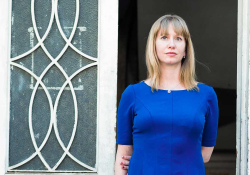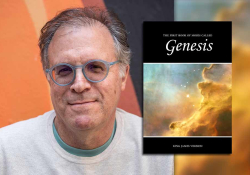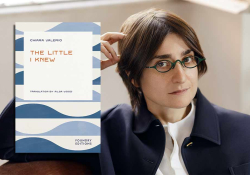In Search of Ambivalent Horror: Mariana Enriquez on Rediscovering the Horrific in Everyday Injustices
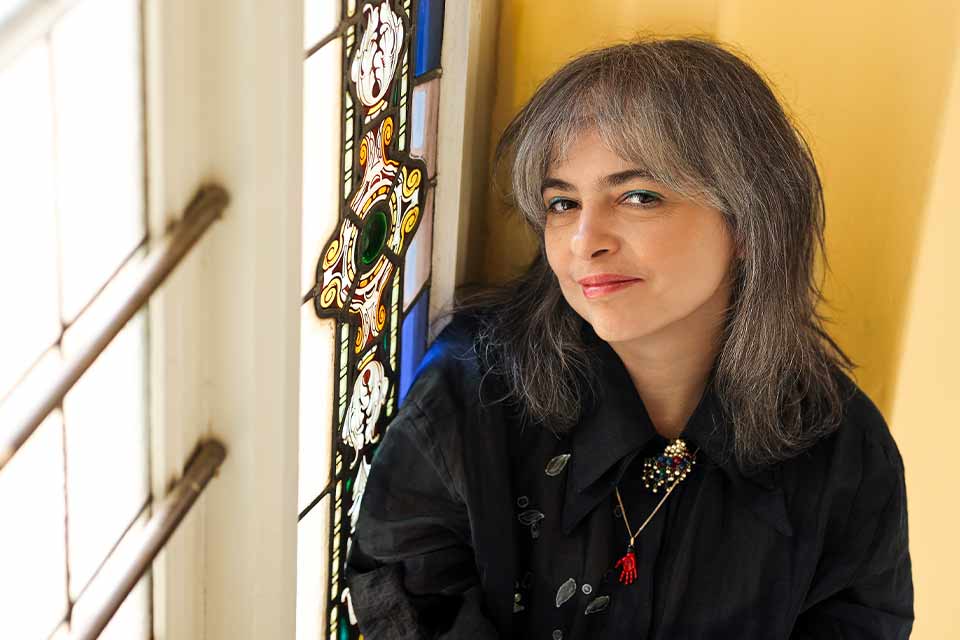
Mariana Enriquez is the uncrowned queen of new Latin American neogothic horror. She launches the classic horror feels, such as fear and disgust, into the twenty-first century and expertly positions her horror as a slap in the face to any kind of fundamentalism, from neoliberal naïve optimists to apathetic lefties. Reading Enriquez is an experience that stays in your body: your nose smells burned meat, you feel rotting flesh between your fingers, and the eerie taste of menstrual blood in your coffee lingers in your mouth, long after the reading is done. The horrific is not outside the house or the body; it’s inside your most intimate self.
Agnethe Brounbjerg Bennedsgaard: I’ve noticed a recurring theme in your stories: they often present very ambivalent characters. For instance, the titular story in your short-story collection Things We Lost in the Fire, in which a group of activist women start burning themselves as a dark protest against men who burn women. The protagonist in this story only has shitty options: either she burns herself and she supports the activist movement or she hands them in to the police, to stop the burning. So she does nothing, she’s apathetic. Many of the female characters and narrators in your stories are very ambivalent in this way. Perhaps because they live in a society that doesn’t really give them any actual good options for a livable life, there’s no moral path to take.
Mariana Enriquez: It’s not only that there are no moral paths to take, there’s no safe life paths for them. And apathy is not an option either because then you disappear. I chose, especially in Things We Lost in the Fire, a protagonist who is also the narrator and a witness. Because I couldn’t write that story from the certainty and the idealism of the women that are burning themselves. Because I don’t have that kind of certainty. Not only do I not have it, I don’t think it’s that interesting, because that would be radicalization. I think it’s more interesting to see what happens with the person who is near that radicalization and can’t, for whatever reason, give herself or himself to that. This narrator, for example, she kind of supports them, but not really.
Bennedsgaard: I am so drawn to that uncertainty. The women in this story start from the certainty of being victims who are being burned by husbands or fathers—that’s their story. But then they start this self-immolation movement, and they’re somewhere in between victims and villains. And the narrator floats around in the borderland as well.
Enriquez: I think in societies, like the United States, that are very divided ideologically, you find this kind of extremism, radicalization, certainly. So, you can meet someone that comes off as a nice, normal, even boring person. But then you go to their car and on the bumper sticker it says “We don’t support science” or something like that. In Argentina, it’s quite different because it’s a different political culture, but it’s still very divided and people think of others as villains. And then, if you’re not safely dedicated to either end of the political spectrum, people will think you’re lame. And I don’t think thinking about things should be lame. In life, I find myself becoming too certain, but in literature, I want the ambivalence that I can’t have in life to be more present.
In life, I find myself becoming too certain, but in literature, I want the ambivalence that I can’t have in life to be more present.
Bennedsgaard: That makes me think of the narrator in the story “The Dirty Kid.” She’s also very ambivalent, as she’s trying to break free from her upper-class upbringing by living in a lower-income neighborhood. She makes friends with one of the prostitutes who lives in her area and knows her way around the area, and she takes pride in that. But that self-image starts to crack when she meets a homeless kid from her block who asks for help. She buys him an ice cream but later remembers that he was barefoot, and she didn’t buy him shoes. And when a story about the brutal murder of a local homeless kid makes the news, she’s obsessed with it, in a way that really mirrors this true-crime obsession of the 2020s.
Enriquez: I think she feels very guilty, but not in any empathetic way. She feels guilty in the sense that she couldn’t live up her own self-image. She believes that by living in this poor part of town, she’s better than other people.
Bennedsgaard: Yes, this self-image crack is very visible when she’s yelling at the kid’s mother and suddenly realizes she’s yelling at a drugged-out homeless teenager. She asks herself, “How am I a good person here?” There’s a lot of these affective feelings in your stories, such shame and guilt. Especially this guilt that seems very middle-class coded, where you think you owe the class below you something and you’re not part of the upper class, so you have a lot of guilt and don’t know how to handle it.
Enriquez: I think the middle class, in South America, but also in general, is very scared of poor and marginalized people. Because they don’t want to become that. And the people that are middle class on the right wing, they are quite violent and aggressive toward poor people. But people on the left are equally scared of the lower class, they just don’t want to show it or admit it. They might not do hate speech, because they don’t hate them, but they don’t know what to do with their own fear. Their fear, not only of being poor themselves, but also their fear of the people.
Bennedsgaard: In your stories, fear is often located within the body, as a series of reactions. Characters react to their own disgust with shame, thinking That’s not very nice of me, I shouldn’t feel disgusted by a poor person, I should feel empathy. It can be a reaction to someone who was burned, or a poor kid on the subway; in both cases it’s not their fault. But these middle-class characters are so disgusted. They don’t want to be physically close to them. And the interesting thing is that the marginalized characters utilize the disgust that they know other people feel toward them. The subway girl, a burn victim, comes up to people on the subway and kisses them. And the dirty kid, he touches people’s fingers. Both of them use the disgust they create in their surroundings to their own advantage.
Enriquez: That was actually true of both characters. One is a fictional child, and the other character is based on a real person, the burned subway girl. The attitude they have is what defines the stories of the book: that attitude of being relentless and therefore powerful. Using the exact same thing that people were trying to shame them for to their own advantage, with a little attitude. Everybody is uncomfortable in their company. With the child, people are probably thinking, I should take this kid home, and why is this child in the street and not with the parents? Why doesn’t the state do anything? But in spite of these thoughts, nobody is showing the child any kind of affection.
Bennedsgaard: In that sense it becomes a political question because nobody knows what to do with the child standing literally in front of them. People think, Generally, I’m against homelessness, but this kid, I don’t know what to do. Because you might have these very moral, correct opinions, but when you’re confronted with someone real—I’m also speaking of myself here—you don’t know what to do. That’s where the guilt shows up.
Enriquez: I have experienced all these sensations coming from a lower-middle-class leftist family. I might be saying, “There should be shelters for homeless people, we should do this, that, blah.” And then when I’m in the subway and see a homeless person that is dirty, I’m just thinking they smell bad. And that makes you realize, one thing is discourse, another thing is action. There is no ideology that can compete with the body—and with the reaction of fear that is absolutely primal.
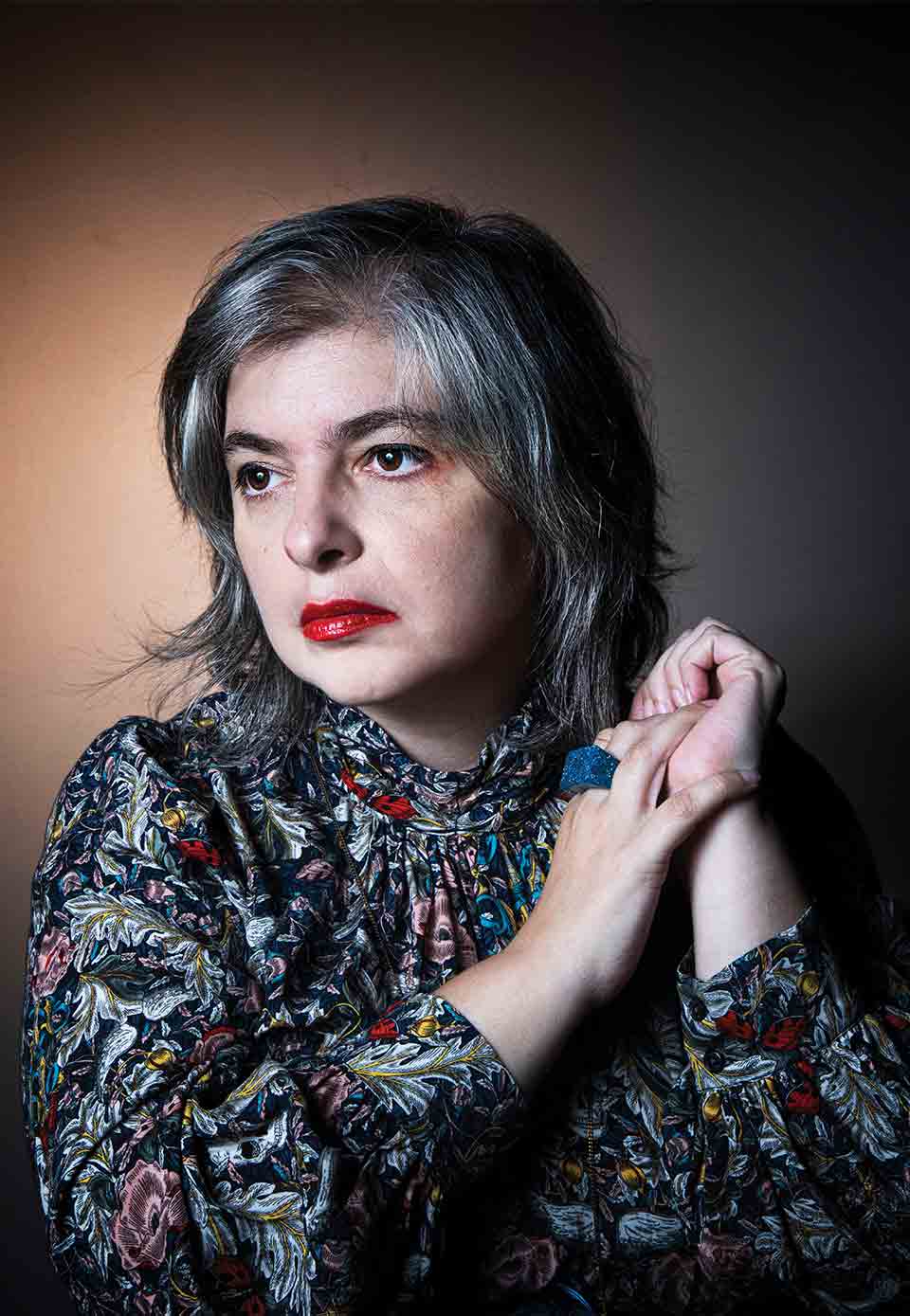
There is no ideology that can compete with the body—and with the reaction of fear that is absolutely primal.
But it also has to do with class; class is stronger than we think. Depending on your class, the way you relate to your body is different, the way you protect your body. Being able to express and reach to the body is a privilege; even what death means is different across class. If a middle-class girl is kidnapped and killed, the whole country will be screaming. But if a poor immigrant girl is kidnapped, the outrage will only last a couple of days nationally. Then it might still be a thing in her neighborhood, but it won’t be the cause of national or global attention.
Bennedsgaard: It reminds me of when those billionaires went down to see the Titanic at the same time that some huge boats of immigrants from North Africa sank before coming to Europe. And they mostly sent rescue teams for those four billionaires. It goes to the point that bodies are not regarded in the same way across class and ethnicity.
Enriquez: Exactly. What matters is the body, and class. I remember this case, it was so ridiculous.
Bennedsgaard: It’s also something that you touch upon in your books, this connection between death and class. For rich people the fear of death is something you can chase. You can go on these Titanic adventures, you can bungee jump, just to feel that you’re alive. Because you know you’re gonna live to at least one hundred, you have the money for all the medical expenses and lifestyle choices. You can have a personal trainer. And they’re going to look for you if you are missing. So you have to go searching for fear of death to feel alive. They pay money to be afraid to die.
For poor people, fear of death is just imminent. In your short stories but also in Our Share of Night, the marginalized know they might die tomorrow. Who knows. No one cares. And when the rich lady in Our Share of Night uses poor children to open a passage to their cult’s ritual darkness, it’s just a sacrifice she’s willing to make.
Enriquez: Yes, and Rosario, her grandchild, questions if her grandmother has gone too far. She’s a very ambivalent character, too. She kind of doesn’t want to be a part of this rich family cult, but she does still want to be a part of it. She wants the privilege and to be close to power. But she thinks they should make it look better, make it more respectable, more moral. I remember having a discussion with my agent, who said, “I don’t like her,” and I said, “I don’t like her either. You don’t have to like her. I don’t have to like her.” But I like Juan, her lover. He was bought by the cult. He had magic abilities, as a medium to this other world, but he was very sick, and his parents were too poor to afford the treatment to keep him alive. But the cult, they could buy him life. As a poor child he would have been dead.
Bennedsgaard: It’s very fascinating the way you use horror, where the actual, real horror is the everyday horror, such as the poor kid, the homeless kid. There are still supernatural elements, but the way I see it, they shine a light on the things that we’ve gotten numb to. How do you see that?
Enriquez: That’s what I don’t realize when I write the characters, but then when I read them I see the layers. I use horror mainly because I love it. But the other reason is that all these everyday horrors are completely normalized. I think it’s impossible to live if you empathize all the time, with every tragedy that is going on, every news story you see, every person in the street. What are you going to do? So, it’s a communitarian thing that we as a global community are not doing. We’re letting people die in the ocean or we’re letting people die in the streets of the richest town in the world, in LA. I’ve been to LA, and I wrote a story about it because I couldn’t not . . . I haven’t seen something like this, even in Buenos Aires. I was sitting in a café and a guy standing on the pavement outside shoots himself in the foot. No one reacted, no one was paying attention. And it was central LA. I was having a conversation with my editor at that café, and I was surprised only because I wasn’t expecting it in LA. If I lived there, I probably wouldn’t have been surprised.
And it’s fair, it’s not the individual’s responsibility, but at the same time, it is. I think in many of my stories, such as in the “The Dirty Kid,” characters are ambivalent but not mean. It’s just not an issue that can be solved individually. It needs community cooperation. If the community somehow decides that these people are expendable, it becomes a white savior kind of thing. This has to be done together.
What I try to do in literature, because I can’t do it in real life, is give it back the horrific quality, give it back the horror. But if I told these horrific things in a realistic fashion, in an investigative, journalistic fashion, it wouldn’t work; we get that every day and nobody cares. I’ll be watching a documentary and be very moved, but two minutes later I’ll be having a fight with my mother on the phone. But with horror, with genre, you shine a light there and produce a physical reaction. It gives back the horror at least for a second, to something that is not perceived as horrific anymore.
Bennedsgaard: What is it about horror that you find so compelling, that makes people react? Is it the monsters, the fear, some of the tropes? What makes it good for shining a light, for snapping someone awake?
Enriquez: I think it’s a number of things, but mostly tropes are very important to me. The ghost, for example, is memory, it’s something that is repeating itself, something you can’t get rid of. It’s guilt, it’s trauma. A haunted house can be many things: a place where people were unhappy, a place where something terrible happened, your own house that suddenly is not the place of refuge anymore. And a trope like the dead coming back, that has to do a lot with Latin American history and history in general. There are so many people that have been killed in unjust situations and just forgotten. Sometimes literally forgotten, like in Spain where they built roads on top of mass graves, because they just didn’t want to deal with it.

Bennedsgaard: It reminds me of your story “Kids Who Come Back,” where children who have disappeared suddenly return, but they’re not themselves. And the parents are so happy at first, but quickly they become so devastated because they realize the children are not the same, not themselves. It’s this mix of tropes, too, because they are almost zombies but also doppelgängers. And there’s also the haunted house. Both of these tropes, you’ve put into a contemporary and local context.
Enriquez: One of the human rights organizations in Argentina decided not to accept the fact of the people who “disappeared” during the military dictatorship. This is a political statement, because they know they’re dead. But what they’re saying is: We want the body, we want to bury something, we want to know what happened to them. We will not accept just death. We want proof. At the human rights demonstrations, they have pictures of the disappeared people. When I was little, they were more or less my age because they were very young, and when I go now, they could be children, because they haven’t grown up.
In the story ”Kids Who Come Back,” it’s the children that come back: they are the same age as when they disappeared, they haven’t aged. That was the original idea, which I combined with Irish-Scottish folklore about fairies who take a child and leave an identical one, a changeling instead. It’s so sinister that something so familiar becomes absolutely spooky, unknown. It’s a trope that I really like. It’s this combination of realist horror and supernatural horror, where one is a mirror of the other, it’s like turning up the volume. When the children come back, you turn up the volume a bit; they’re the same age, but they’re not the same.
Bennedsgaard: Yes, these kids are not the same, and to me that’s where the combination of supernatural and realist horror becomes so potent, because several levels of reality are working together. It’s a realist way of looking at something supernatural; saying, okay, they meet death and overcome death, but on a realistic level, this experience of facing death affects them—they can never be the same. There are a lot of people returning from death in your stories. It seems like death is not the end.
Enriquez: I want to challenge our idea about what death is. I’ve been hearing all my life that any death is a tragedy. But I don’t think so. Death is biological. It’s awful, we grieve. But life ends, it’s not supposed to last. And it’s difficult to negotiate with that. I’m fifty now and it’s absolutely amazing. But there’s very little information in the public debate about what happens with women’s bodies once they enter menopause, because then it’s no longer a body that gives life, so it’s seen as a bit useless.
Bennedsgaard: It’s almost as if most societies don’t see women as important once they’re done reproducing.
Enriquez: Menopause is also the first step of the body starting to wither. I think that’s another reason why menopause is taboo or underexposed at least, because it would involve recognizing that old age and death are looming. I once did a book on cemeteries, and it seems nobody is ever at the cemeteries. They are completely abandoned, because we have difficulty accepting death. Of course, it’s painful and everything, but it’s also just the end of life. I think in the middle classes—of any country really, because middle class is like a mentality, a country unto itself—but especially in the upper classes, we tend to think that we are immortal for some reason. I see that with the obsession with skin care and such. I myself am really uncomfortable with being old, and this is something I talk to my therapist about. I know it’s an irreversible state, so why am I uncomfortable with it, what got into my head culturally?
Bennedsgaard: I definitely think it’s in the culture. It’s youth-obsessed. I think women just get scared, not simply of not being able to reproduce anymore but of not being attractive. Because you’re taught, as a woman, that your ability to attract a man specifically is why you were put on this earth, it’s what gives you value. And that’s just so disturbing, obviously.
Enriquez: That’s why men are silver foxes when they’re my age, they’re just hot when they’re fifty. And rich people, like you said, they think they can buy life, which is even more fucked up.
Bennedsgaard: I find it very dystopian. People going to Mars and building underground buildings for the coming apocalypse. That’s such a wild stance to take also from a climate perspective, to go, “Oh yeah, maybe the world ends, specifically due to this overconsumptive behavior, but at least my closest friends, my family, and I will survive.” Speaking of which, you said once that we’ll all end up writing climate fiction. What made you say that?
Enriquez: Because we are living in a planet that we killed ourselves. So, I guess that the fear of the body and of death is related to the climate crisis. It’s like we’re burning down our own house.
The fear of the body and of death is related to the climate crisis. It’s like we’re burning down our own house.
Bennedsgaard: Do you think it will be climate horror then, if you were to write it?
Enriquez: I don’t know. But there is climate horror out there. When it’s done well, it can be very good. But I don’t care for dystopia, because it’s overdone, and it’s kind of the same. I like these alternative stories where it’s not the same tired trope of a wasteland without water. I love Fever Dream, by Samanta Schweblin. That is good climate horror. It shows how the horror of the climate crisis is not individually produced but societal.
Bennedsgaard: On the topic of alternative stories, how do you balance having these two reality planes at the same time? You have this world that seems kind of familiar because of these geographical indicators, it makes you think as a reader, This is somewhere that I know. You get quite far in the story, and suddenly something happens that slashes your sense of security. But it doesn’t slash it wide open into a fantasy world, it still exists on the same plane. How do you do this?
Enriquez: First, you have to be a bit suspicious of reality. And I’m a bit like that. Not that I’m paranoid. But I always think that, especially when things look very composed, there’s something going on. Underneath that composed surface something is totally wrong, there’s something hidden, otherwise it wouldn’t be that composed. But I think it also comes from reading a lot of weird fiction, especially from the 1960s. I’m thinking of Robert Aickman’s “Ringing the Changes,” where a couple goes to a seaside town and everything seems to be within the realm of the possible. But there’s one very strange thing: the bells in the church are ringing constantly. Turns out they’re ringing to wake up the dead. So, the reality is slashed but not completely.
The main thing is that you are absolutely comfortable not only in reality but within the story, you recognize the tropes, but suddenly the horror cuts through. The recognition is not just in the mimesis but also in the narrative. To create this, I especially like to write about work—there’s not much fiction about work even though it’s all we do—and it really helps me create a realist connection, so the reader believes the story.
September 2023

